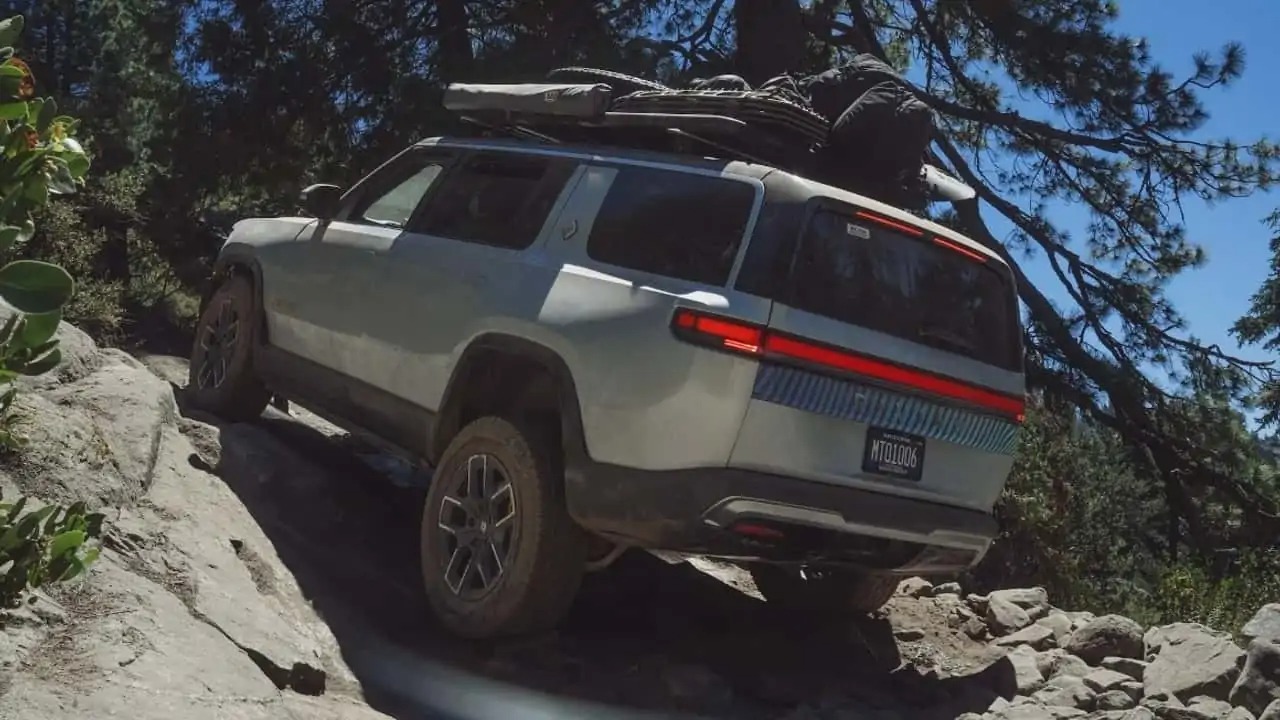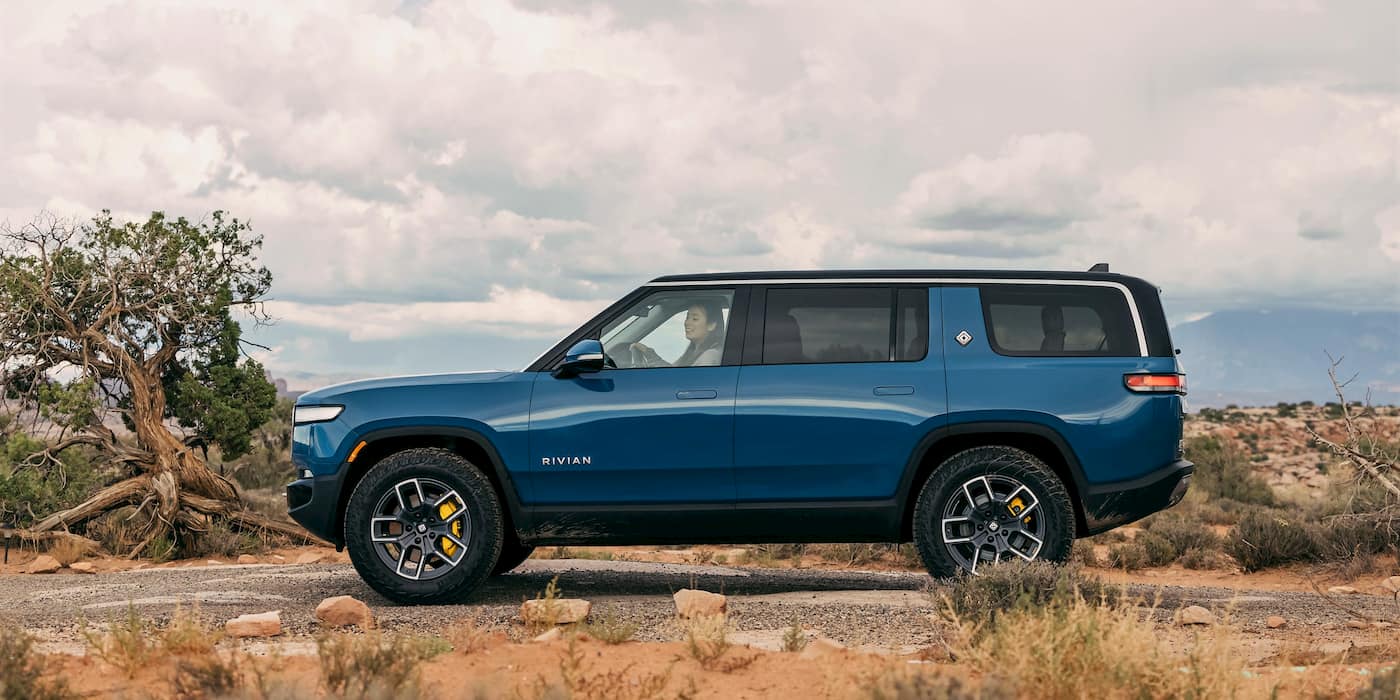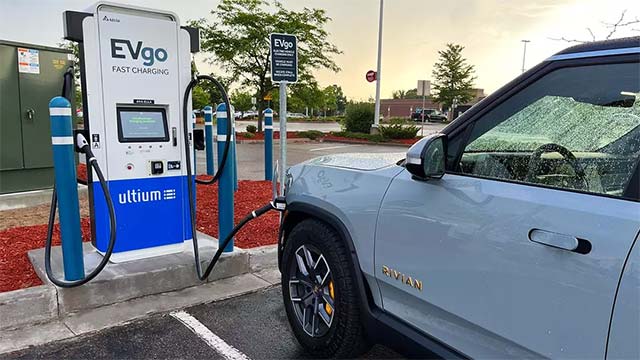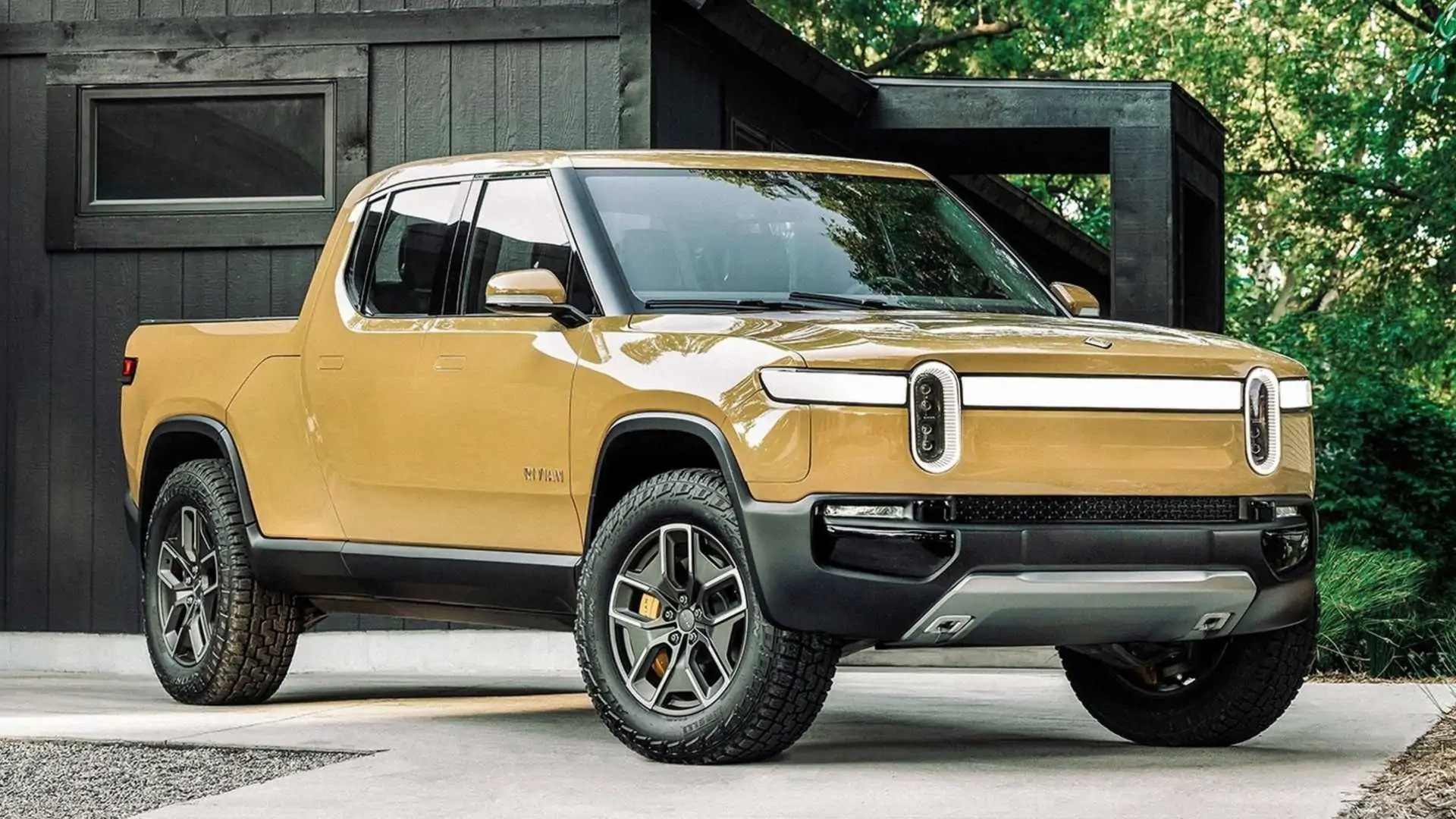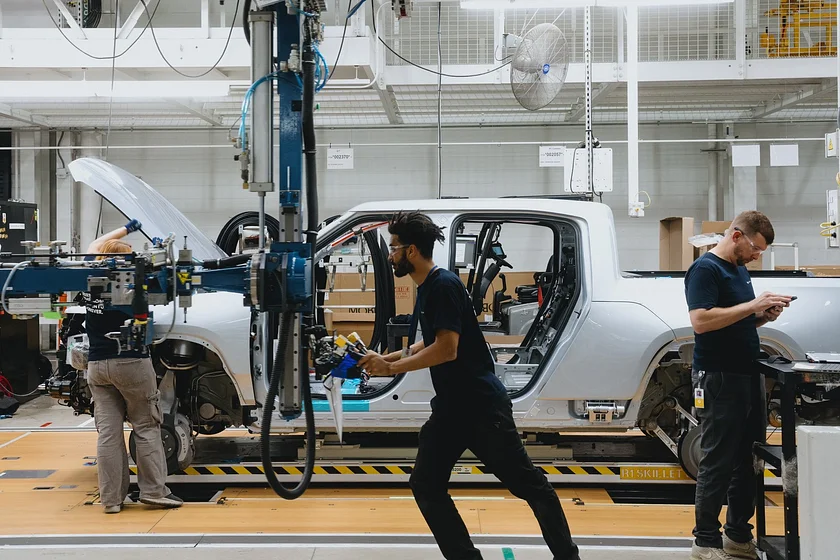In an impressive feat of engineering and determination, Rivian’s R1S electric SUV has achieved a remarkable milestone by becoming the first production electric vehicle to conquer the formidable Rubicon Trail. This renowned off-road trail, known for its treacherous terrain and demanding obstacles, witnessed the R1S SUV navigate its way through a challenging 12-mile stretch, marking a significant achievement for electric mobility in the adventure-oriented automotive landscape.
Setting out from the Loon Lake entrance south of Lake Tahoe, near the California-Nevada border, Rivian’s test and development team embarked on their mission on Monday, August 7. Over the course of approximately eight hours, the R1S tackled steep inclines, rocky barriers, and rugged boulders to reach the Tahoma staging area, showcasing the vehicle’s robust capabilities in the face of extreme conditions.
See also: Real-World Testing Results of Rivian R1S Dual Motor Revealed by EPA
The R1S, equipped with stock quad-motors and 34-inch Pirelli all-terrain tires, conquered the challenging trail while carrying additional equipment such as front tow-hitch receivers, steel rock sliders, and a roof rack. Rivian disclosed that the SUV commenced the challenging ascent with an 80 percent state of charge (SoC), ultimately concluding with “under 10 percent” remaining range. This power consumption underscored the taxing nature of the trail on the vehicle’s battery.
Our stock Quad-Motor R1S is the first production EV to complete the Rubicon Trail, one of the most challenging off-road trails in North America. Thanks to @trail_rubicon for working to keep the trail open and sustainable. Details on the historic run: https://t.co/whfq5asFNB pic.twitter.com/Xx7r6YgsjS
— Rivian (@Rivian) August 15, 2023
According to Rivian, the R1S utilized roughly 75 percent of its total pack energy to successfully complete the endeavor, akin to consuming three gallons of gasoline. The Rubicon Trail, notorious not only for its toughness but also its isolation, presents communication challenges as mobile networks cover a mere 0.1 percent of the route. Communicating via radios is a necessity, as indicated by the Rubicon Trail Foundation responsible for maintaining the trail.
See also: Rivian’s R1T and R1S Models Experience Tire Wear in as Few as 6,000 Miles: Here’s Why
Navigating the Rubicon Trail demands exceptional driving expertise and precise vehicle control. Negotiating tight turns, managing off-camber segments, and deftly handling obstacles requiring meticulous tire placement and rock crawling techniques are prerequisites for success.
A video shared by Rivian showcases the R1S’s journey, with the electric SUV audibly splashing through rivers, maneuvering across large rocks with calculated precision, and demonstrating its off-road prowess. Despite encountering cosmetic imperfections such as bumps and scrapes, Rivian reported no mechanical damage or tire replacements during the trail conquest.
![]()
During this remarkable excursion, the R1S was accompanied by two quad-motor pre-production R1T electric trucks and a modified Jeep Wrangler for support. Rivian’s dedication to adventure-focused vehicles is evident in the R1S, boasting a remarkable maximum ground clearance of 14.9 inches and the ability to ford water depths of over three feet. Its approach, departure, and breakover angles of 35.6, 34.3, and 29.6 degrees, respectively, contribute to its exceptional off-road performance.
See also: Rivian Disables Driver-Facing Camera in R1T and R1S Models Due to Performance Limitations
In comparison, the Jeep Wrangler Rubicon, a revered off-road icon, offers a ground clearance of 12.9 inches along with approach and departure angles of 47.4 and 40.4 degrees, respectively. Its maximum water-wading height is documented at 2.8 feet.
Notably, Rivian’s production and deliveries are on an upward trajectory. In the first half of 2023, under the leadership of CEO RJ Scaringe, the brand achieved a substantial production milestone with 23,387 EVs, marking a remarkable year-over-year increase of 236%. Accompanying this achievement was the delivery of 20,586 units, demonstrating a significant year-over-year growth of 262%.

